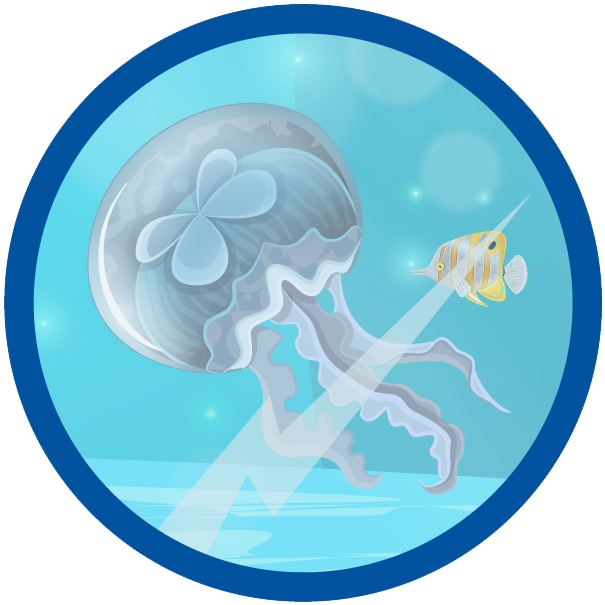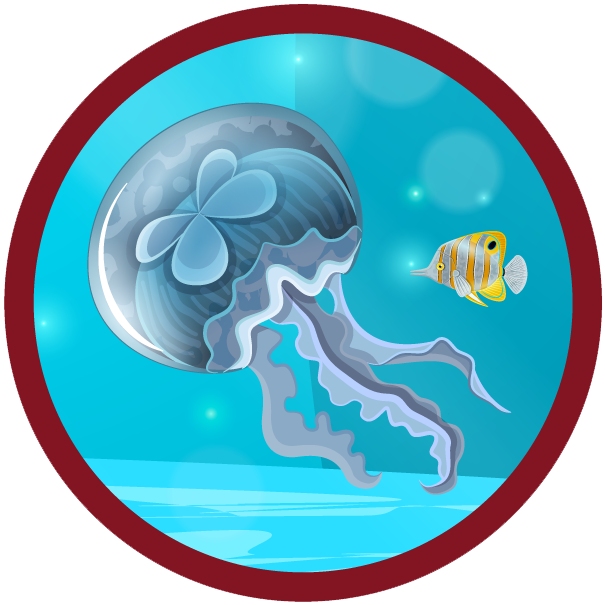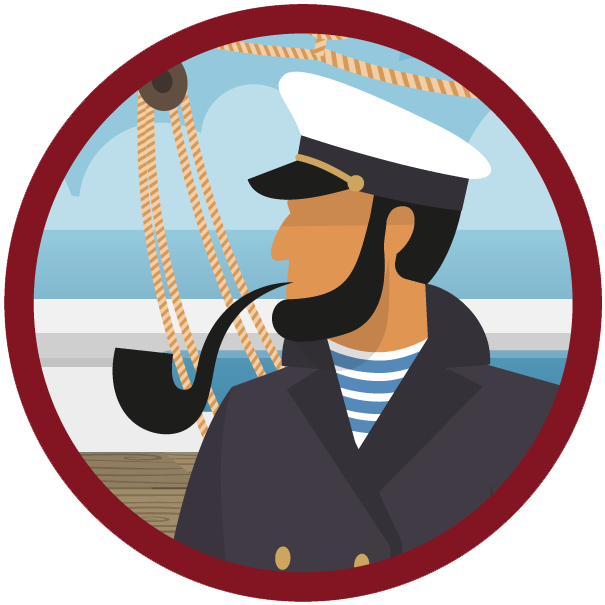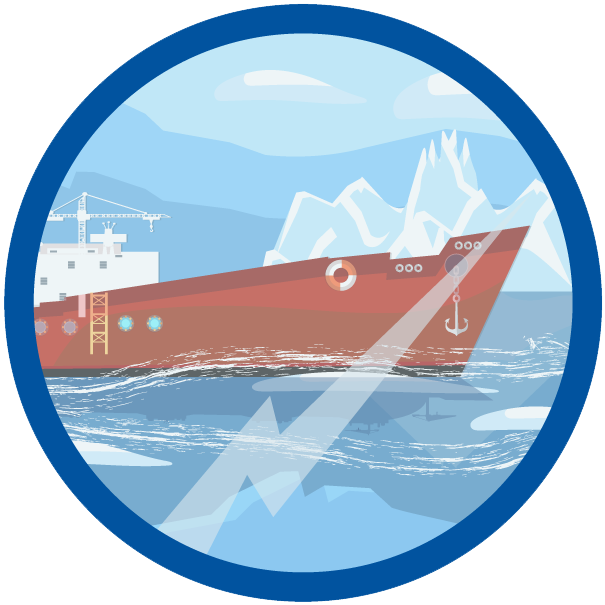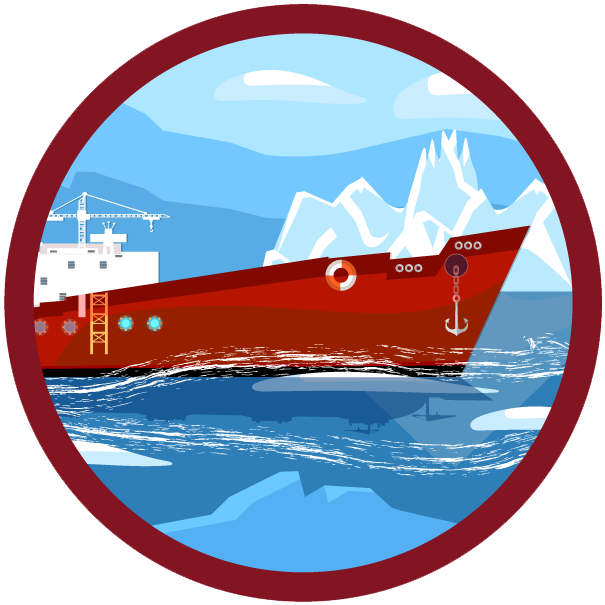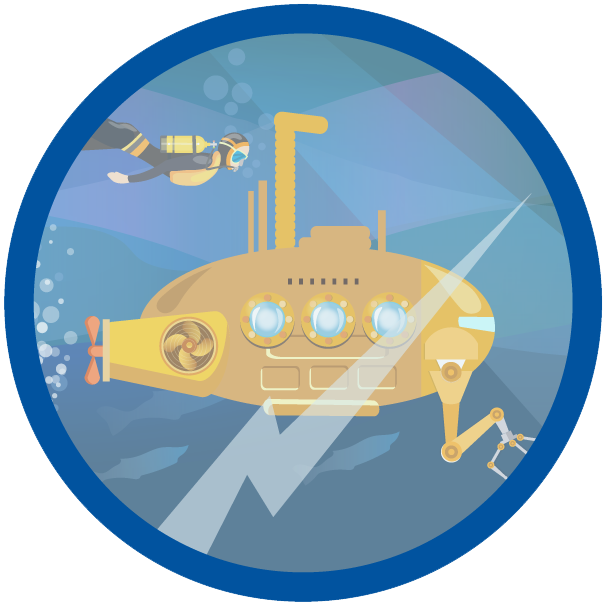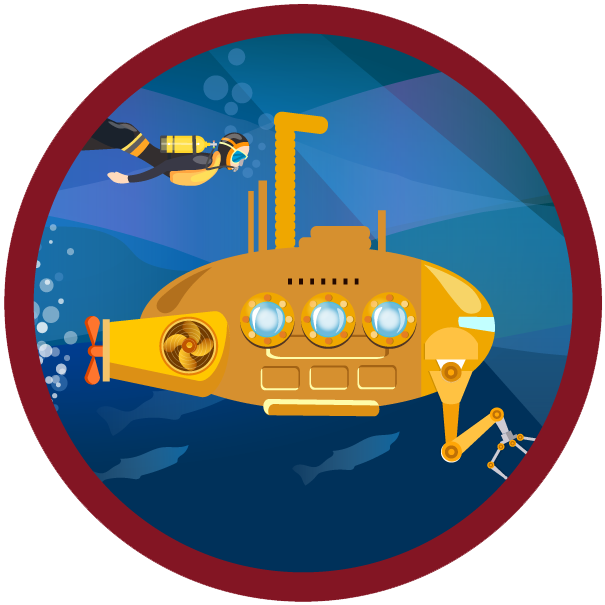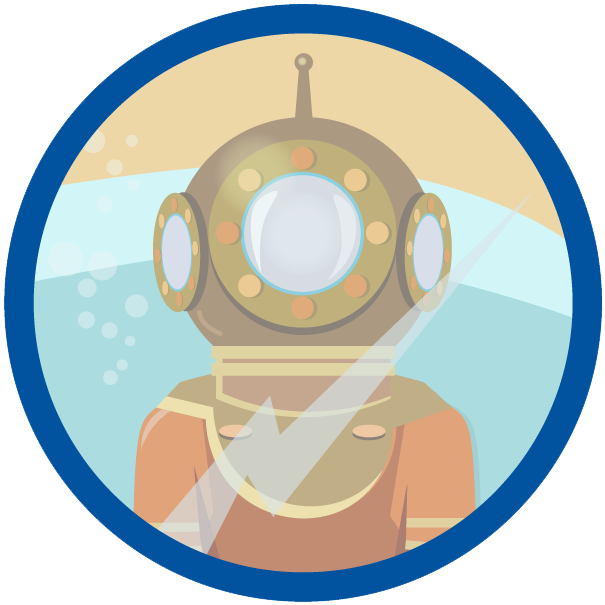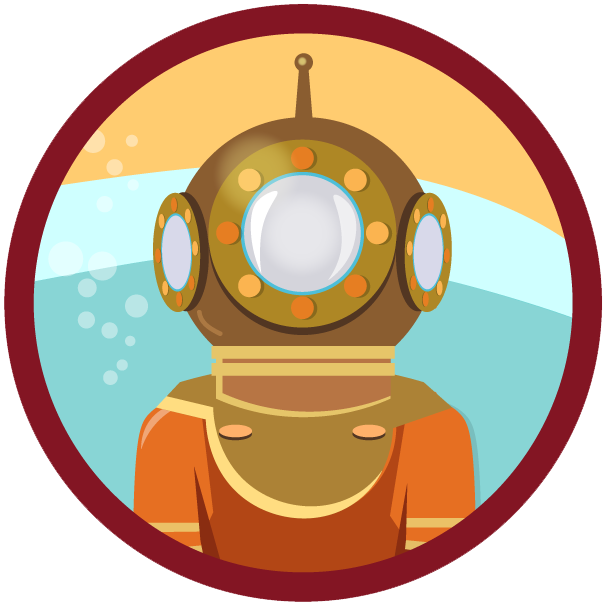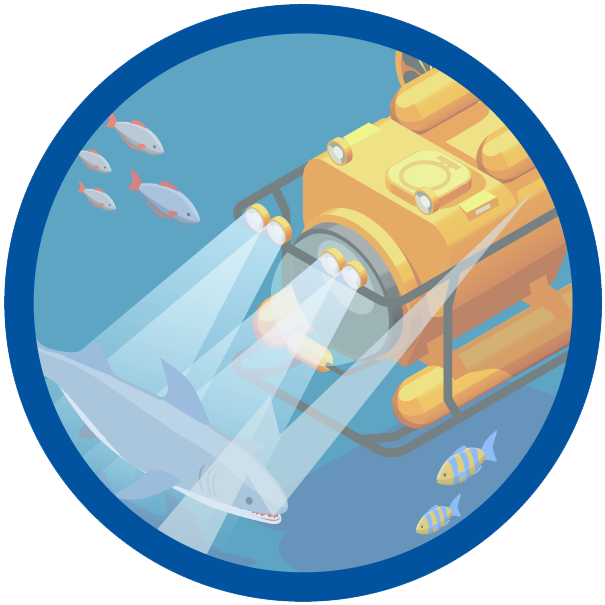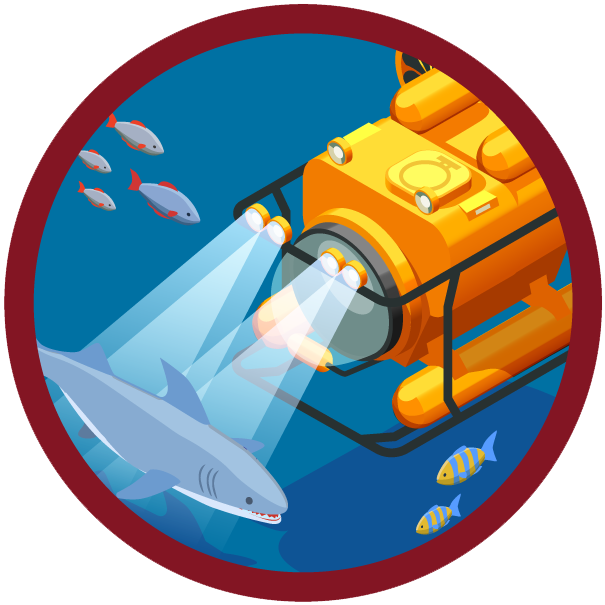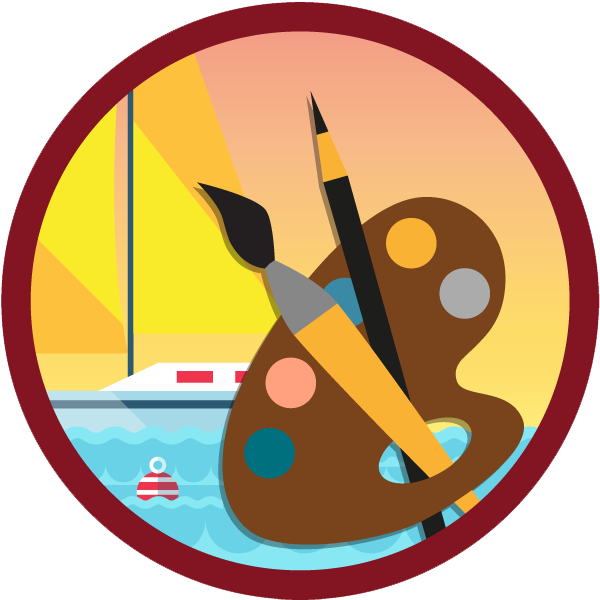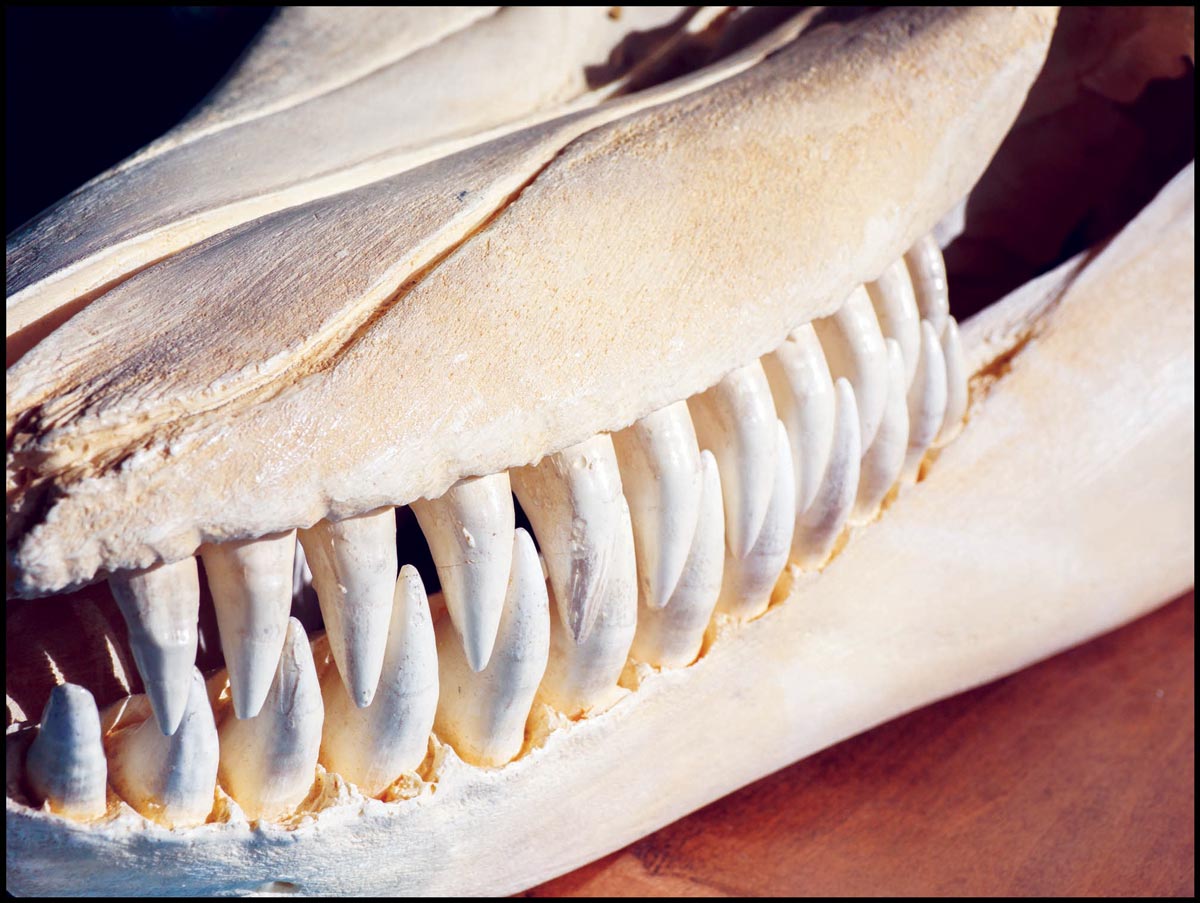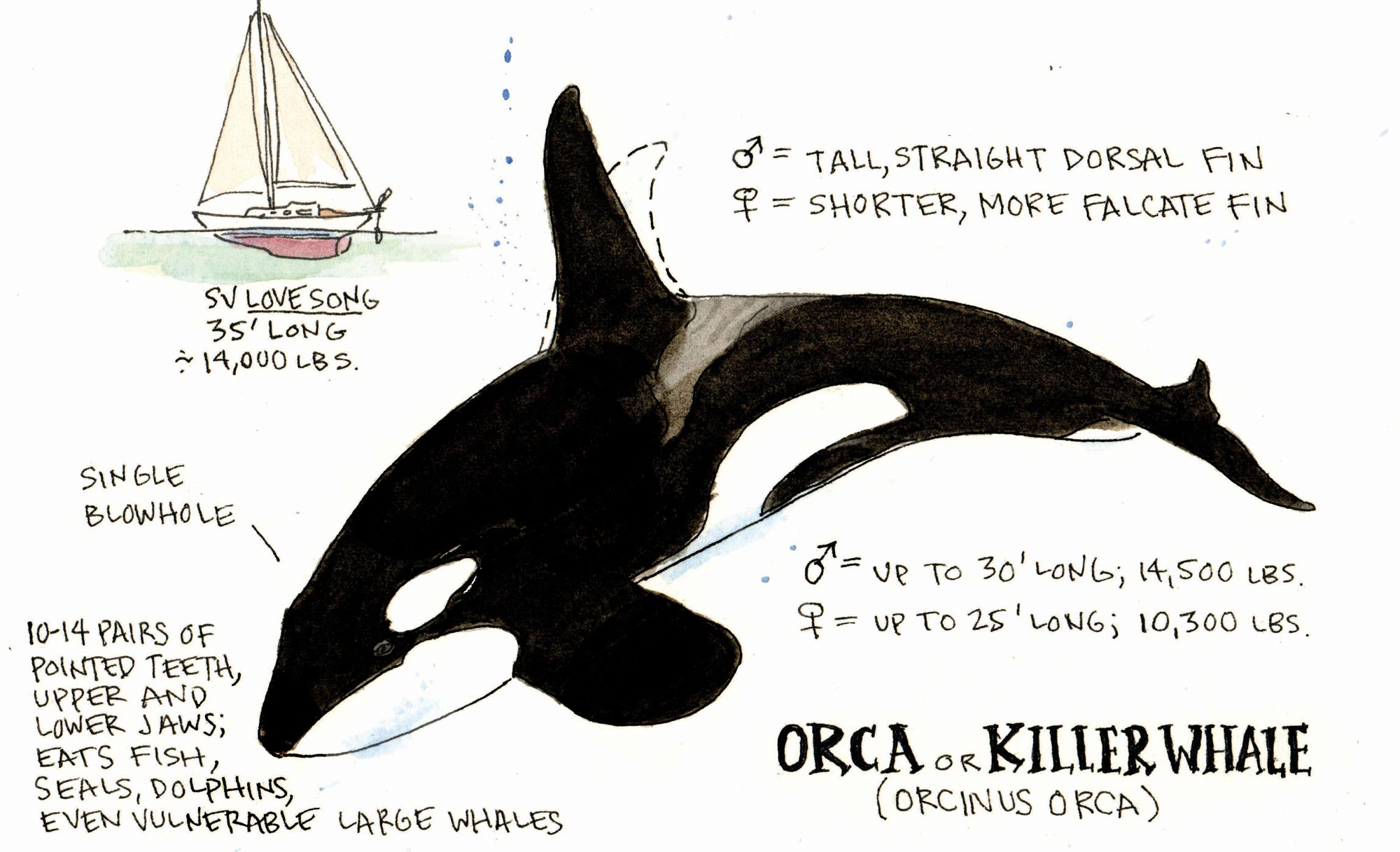
ANIMALS IN SEA HISTORY
Orca or Killer Whale
 Play Audio:
Play Audio:
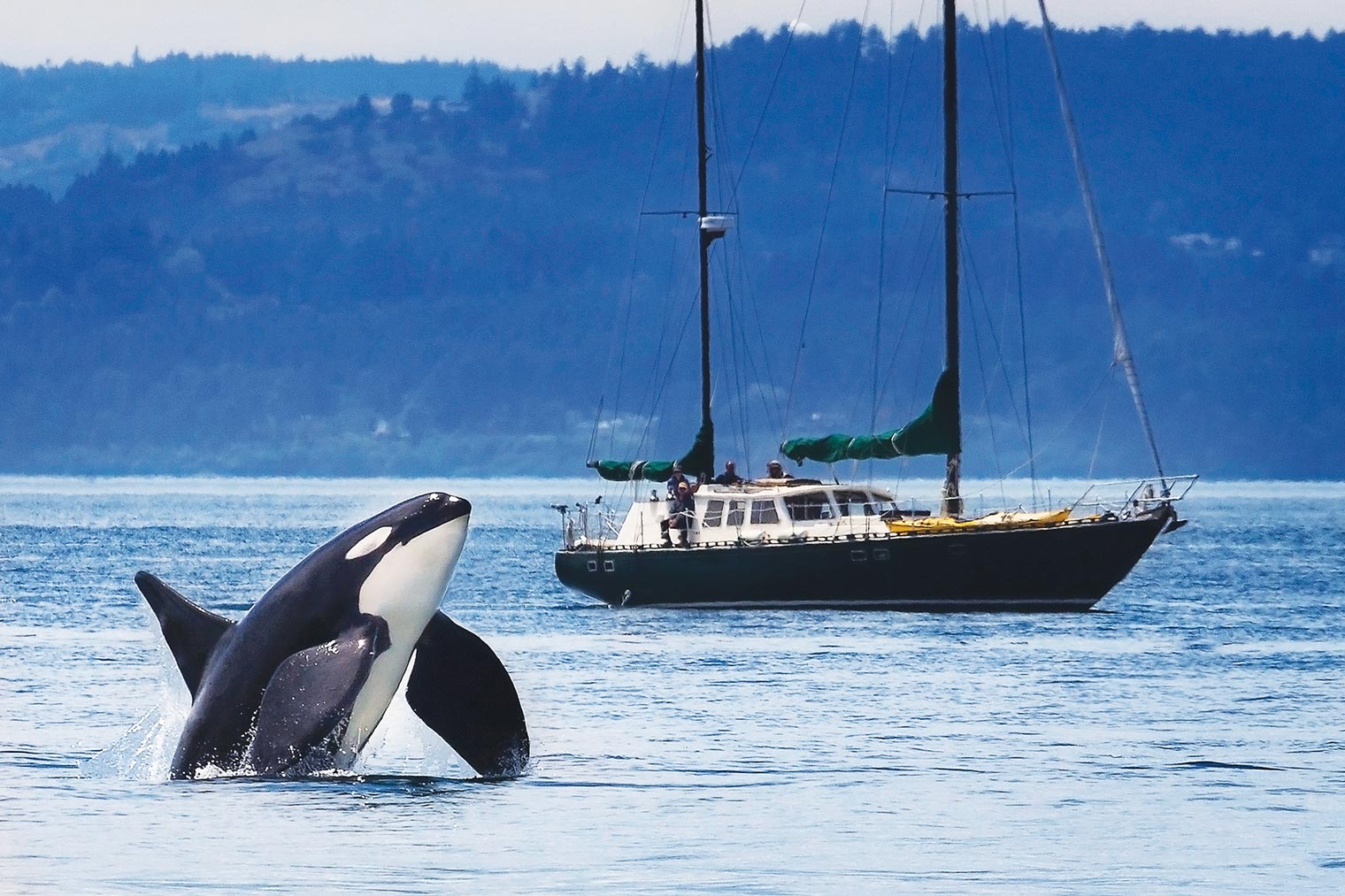

By Richard King

Sailor Teddy Seymour wrote about his experience with an orca during his solo world voyage in 1986–87.
Photo courtesy of National Sailing Hall of Fame.
“This peacefulness was interrupted,” wrote Teddy Seymour, “by a strange encounter of an animal kind.” Sailing alone in his boat Love Song in 1986, he was cruising across the Gulf of Aden, bound for the Suez Canal. So that he could let go of the tiller to sleep, eat, read, and do boat maintenance, he was using an Aries self-steering system that used a separate rudder suspended off the stern.
Seymour had passed through a region of light winds and was making good time, sailing along safely and calmly. All was going well. Earlier that day he had seen an orca—also commonly known as the killer whale. Orcas are one of the easier whales to identify at sea because of their glossy black skin, distinctive white patches, and their tall thin dorsal fin, which for males can stick up as high as six feet, like a giant witch’s hat slicing through the seas.
After dark, the same orca—or perhaps another one—approached his boat.
“A mischief maker pushed Love Song sideways,” Seymour wrote, “and made teeth marks in the Aries rudder. By the time I leaped to the cockpit, the rudder was being molested as the boat continued to be pushed and slightly tilted.”
Seymour didn’t estimate the whale’s length, but orcas can grow as long as thirty feet, and his boat was only thirty-five feet long.
“As the hull slid off the emerging monster,” Seymour explained, “a part of the mass appeared; then it quietly submerged. Operating the engine and striking the engine with a hammer were two techniques used for the next half hour to deter foul play.”
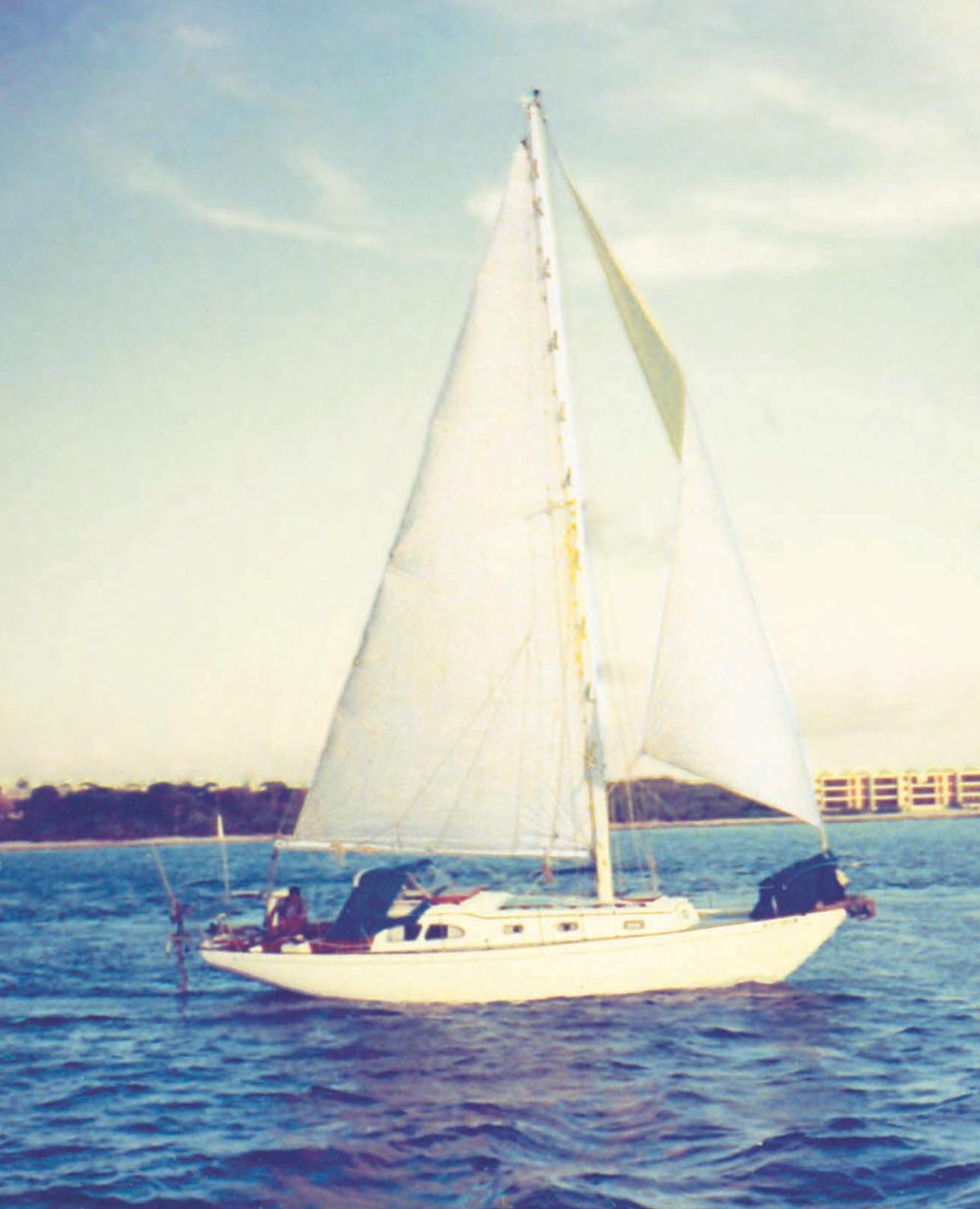
Teddy Seymour aboard his boat Love Song off St. Croix; the self-steering gear, safe and sound, can be seen suspended off the stern. Photo courtesy of Univ. of Florida, Special Collections.
This was quick thinking by Teddy Seymour. Killer whales, like all toothed whales, are highly in tune to their sense of hearing underwater: sound and echolocation are their primary methods for hunting and social communication. Engine noises are known to deter killer whales and reduce their ability to talk to each other and to find food. In the 1980s when this incident took place, the branch of marine biology that studied whale echolocation and their sensitivity to underwater sound had only begun to emerge. From several species of whales, scientists identified local dialects and clicks, pulses, and whistles underwater.
The fact that Seymour encountered an orca near the Middle East might come as a surprise, but killer whales, known as alhut alqatil in Arabic, are the ocean’s most widely distributed mammal. Not only do they swim across all oceans, they also penetrate the icy waters in both the Arctic and the Antarctic. Though they are rarely sighted in the Arabian Sea and even into the Red Sea, they are indeed occasional visitors in this region.
Wherever they live, orcas are highly adapted to their particular parts of the world. They live in packs to hunt prey, which, depending on their part of the ocean and the traditions of their given group of orcas, might be fish, penguins, seals, or even a vulnerable large whale, such as a young sperm whale or a sick humpback.
Seymour concluded his account later, with some humor from the safety of his writing desk at home:
Explanations submitted to account for this obnoxious behavior suggest both innocence and violence. Was the nudging an act of passion? Could it have been love at first sight? Were the teeth marks a display of affection to be viewed as a memoir?
Perhaps the light-grey colored Aries rudder flashing side-to-side in the phosphorescent matter of the sea lured the animal into regarding the device as an evening snack. For the same reason that a patent log rotor is painted black; namely, shark avoidance, I accepted this incident as a suggestion to paint the Aries rudder a darker color.
Seymour’s orca probably had no romantic attraction toward Love Song, despite the vessel’s name, but perhaps the pale rudder moving through the bioluminescence might have looked like a fish or a flipper to a hungry killer whale. The rudders of these devices are quite hardy, but I suspect if that orca—with each tooth longer than your finger—had really wanted to take a full confident chomp, it would’ve left more than just teeth marks.
After that night with the orca, Seymour continued on his voyage aboard Love Song through the Mediterranean and across the Atlantic. On 19 June 1987, 16 months after he began his world voyage, he dropped anchor back in his home harbor at St. Croix in the Virgin Islands. Seymour, who grew up in Yonkers, New York, became the first African American to complete a solo circumnavigation of the world.
Teddy Seymour was not, however, the first or the last sailor to come hull-to-head with a killer whale. Recently, orcas off the coast of Portugal and Spain have been making the news. In 2021, according to SAIL magazine, more than fifty boats reported close encounters initiated by orcas, half of which resulted in damage that required heading into port for repairs.
For more on this topic, visit the Facebook group “Orca Attack Reporting.”
Top Feature Image: Photo by Mike Doherty, courtesy Unsplash.com.
Did You Know?

Albert Einstein loved to sail and he sailed his whole life.
Renowned as one of the greatest mathematicians and physicists of all time, by most accounts Einstein was also a terrible sailor! Making a boat go in a particular direction is a very interesting bit of science, so you wouldn’t think he would have had any trouble with it—but you’d be wrong.
What’s the secret to sailing any place you want to go, no matter which way the wind is blowing?

